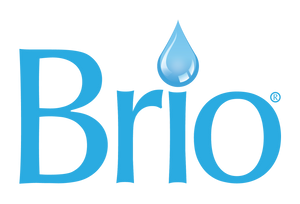It’s easy to take fresh drinking water for granted. You turn the tap, and clear, clean-looking water flows out.
But did you know that the current standards of the Safe Drinking Water Act (SDWA) only came into being in 1996?
Even with those standards in place, harmful substances can still find their way into your tap water. These five contaminants in tap water can cause health concerns and reduce the quality of your water, and are a prime motivator for investing in an effective water filtration solution.
![]() PFAS
PFAS
PFAS stands for per- and polyfluoroalkyl substances. These chemicals are used for coating non-stick pans, fire suppressant materials, and other everyday needs. They don’t break down easily, hence their common name of “Forever Chemicals.” These forever chemicals are building up in our environment, and are linked to health concerns such as:
• Reproductive problems
• Poor insulin regulation
• Liver disease
• Thyroid dysfunction
• An impacted immune system
• Developmental issues in children
Filtering PFAS from your drinking water requires specially certified filters or a system that utilizes activated carbon or reverse osmosis to physically prevent the molecules from entering your tap water.
Radon

When radioactive materials like thorium, uranium, or radium break down, they produce radon, a gas associated with lung cancer. It’s odorless and tasteless, and can accumulate in groundwater before making its way into your home.
Granulated activated carbon treatment is one recommended way to remove radon from your home's water supply.
Lead
One of the most dangerous contaminants in tap water is lead. In 2024, reports showed that at least 9 million American households still received their drinking water through lead pipes. This is problematic because lead is a toxic heavy metal that can lead to:
• Poor mineral absorption, which can cause developmental problems in children
• Neurological disorders, both in childhood and adulthood
• Reduced fetal growth
• An increased risk of pre-eclampsia
• Decreased cognitive function
Invest in filters certified to remove lead from water to drastically cut the risks associated with this heavy metal in your drinking water.
Copper

Unlike other contaminants on this list, copper is an essential mineral, associated with energy production and metabolism. However, too much copper in your diet can lead to serious health problems. Copper toxicity causes digestive problems, liver damage, and neurological issues.
Copper can enter your drinking water through copper pipes or runoff from agricultural or industrial sources. Reverse osmosis is one way of preventing excess copper from contaminating your household’s tap water.
Nitrate
The compound nitrate, sometimes referred to as nitrates, is made of nitrogen and oxygen and is a common byproduct of agricultural fertilizers. Nitrate can also occur naturally, and can be produced by animal feed waste or poorly maintained septic tanks.
Although nitrate sounds harmless — after all, oxygen and nitrogen are always present in the air around us — the way it interacts with our bodies can be extremely dangerous. Nitrate can cause tissues to not absorb oxygen properly, leading to serious illness. Possible impacts include:
• A drop in blood pressure
• Headaches
• Stomach pain
• Vomiting
• Increased heart rate
• Thyroid problems
Nitrate is especially dangerous to infants. Unfortunately, if consumed in excessive quantities, nitratecan cause death.
Reverse osmosis-based filtration systems block nitrates from entering your drinking water. If you discover there’s a high risk of nitrate in your local water system, a whole-house reverse osmosis filtration solution could reduce the risk of nitrate-associated health concerns.
Keep Your Family Safe With Filtered Water

These contaminants in tap water are still common across the nation, despite the SDWA. Thankfully, it’s easy and cost-effective to supply your house with clean, filtered water. Explore whole-house filtration systems, countertop water coolers, or tankless undersink systems.
Some options, like the Brio Moderna 730 Series 4-Stage Reverse Osmosis Bottleless Water Cooler, offer self-cleaning functions. Additionally, this machine features a taller dispense height, allowing you to easily fill a reusable water bottle so you can take it with you every day.
The added benefit? You’re helping protect the environment. Single-use plastic water bottles aren’t always recycled. Some are incinerated, creating airborne pollutants. Many others end up in our oceans, causing grave damage to the ecosystem.
Plastic pollution in the water contributes to the presence of microplastics that enter drinking water. While an effective filtration system stops these from impacting your household, reducing the volume of microplastics is essential for a healthier environment.
To learn more about safe, simple water filtration solutions, contact Brio Water or browse the collection online.




